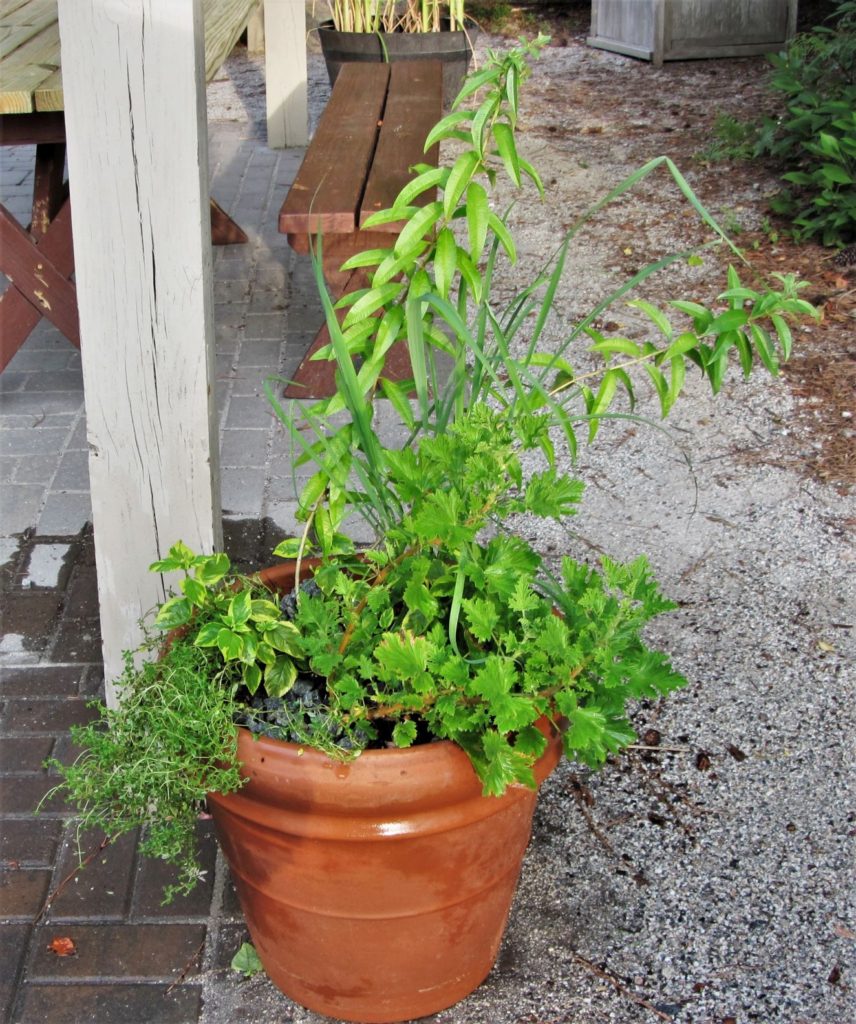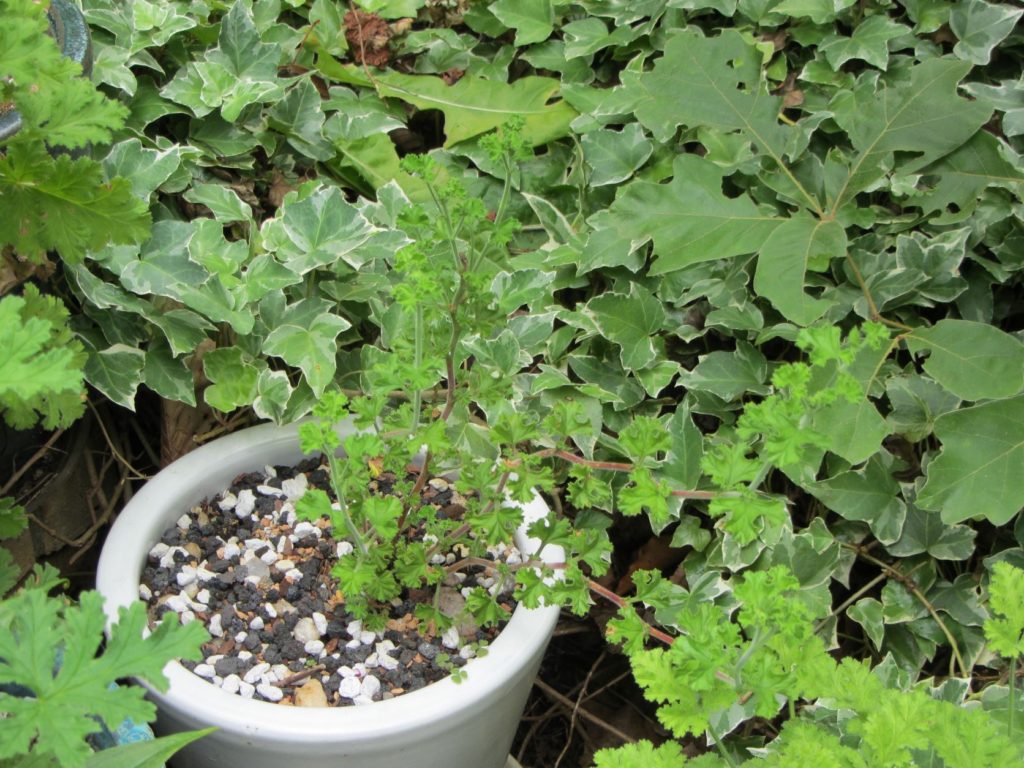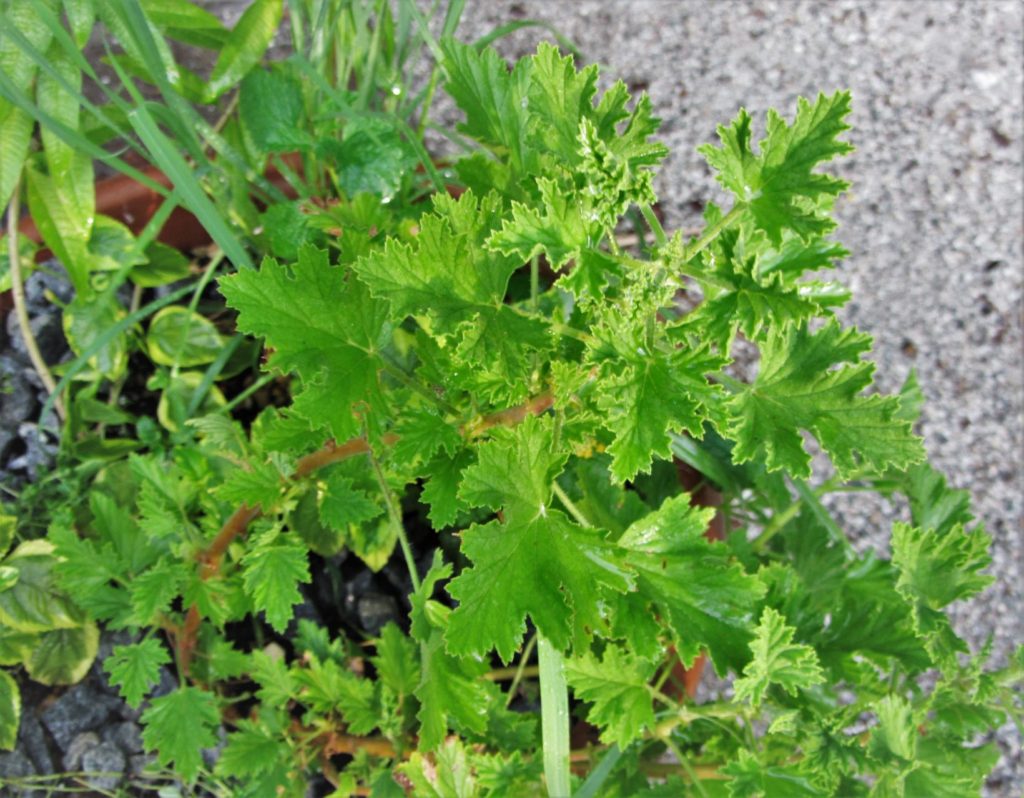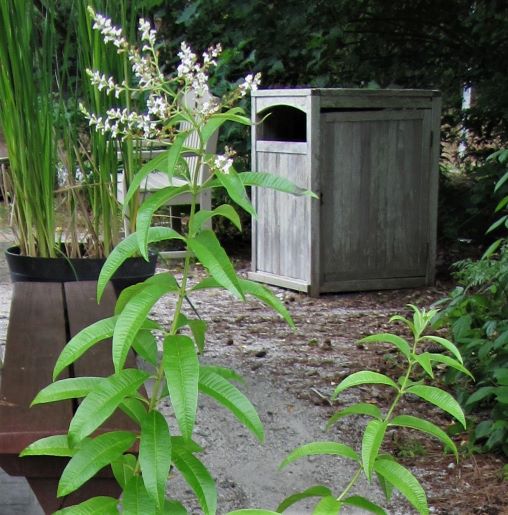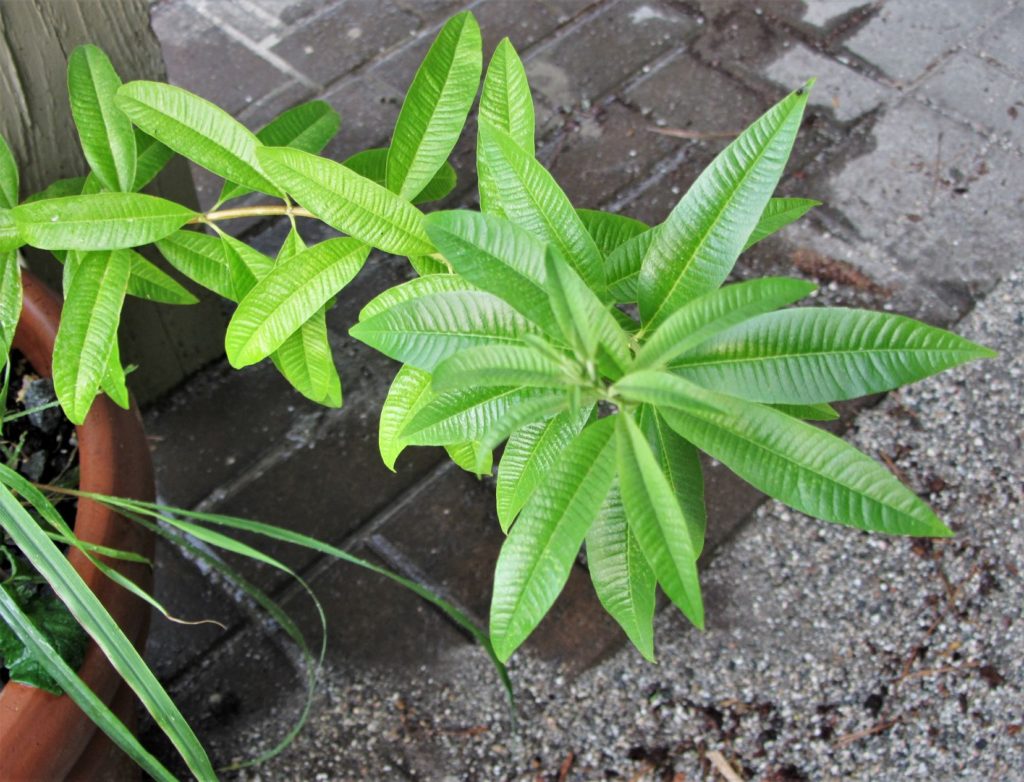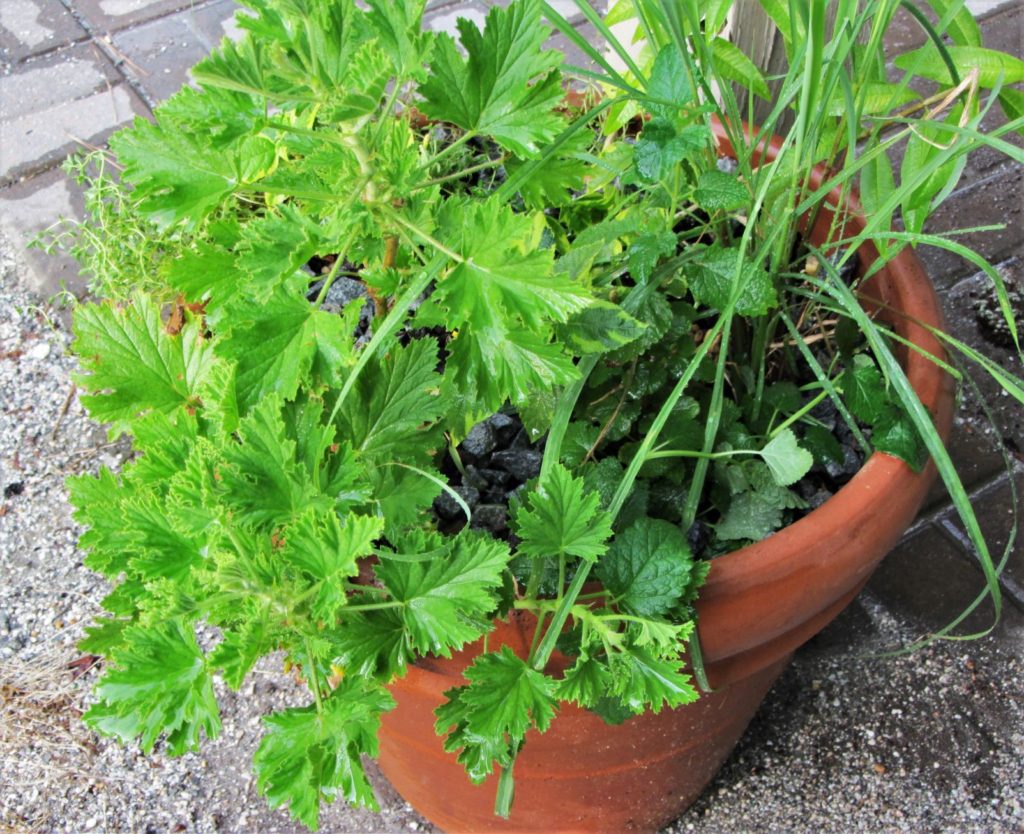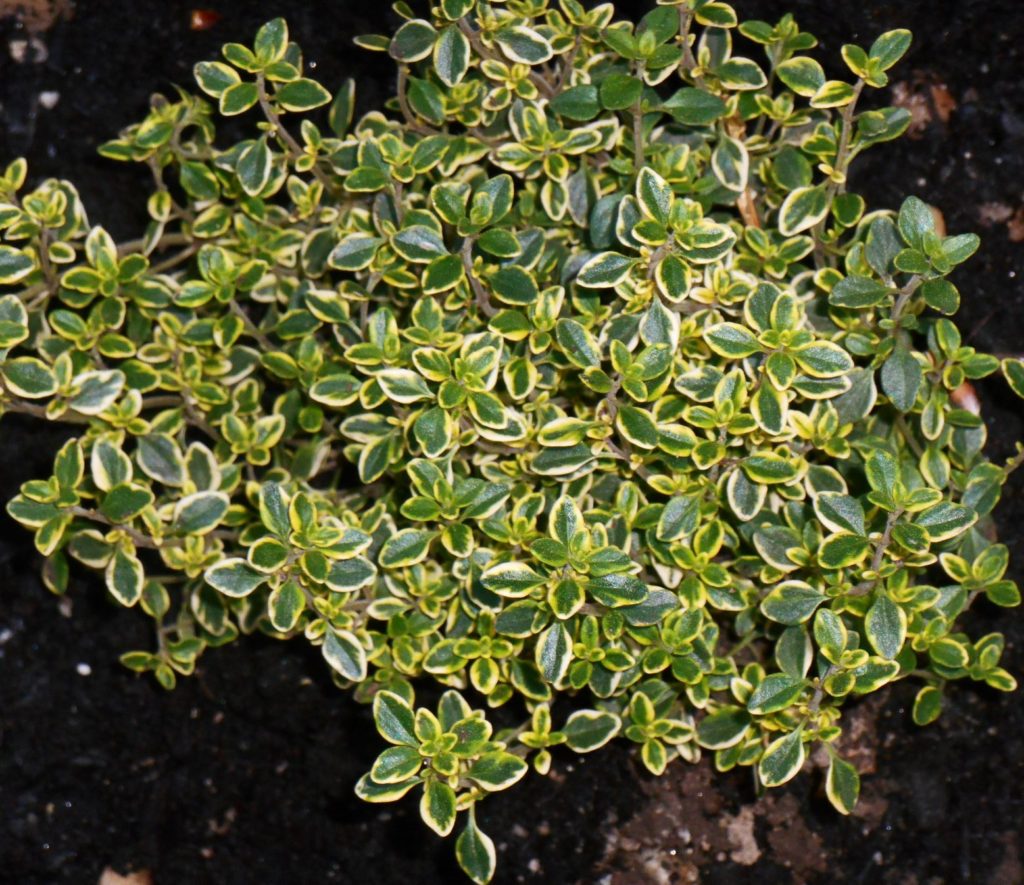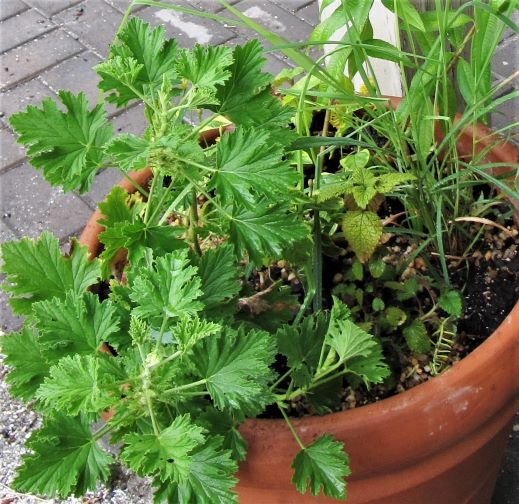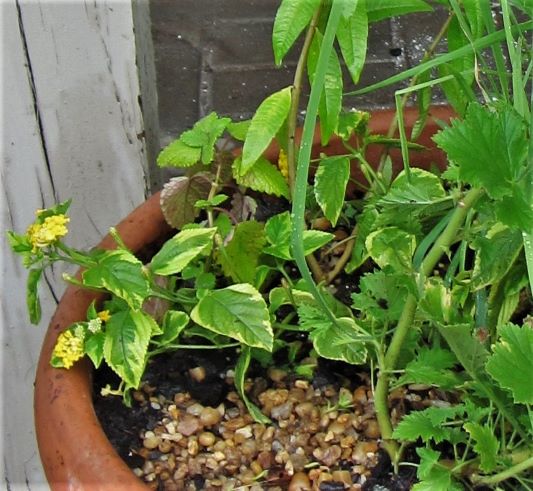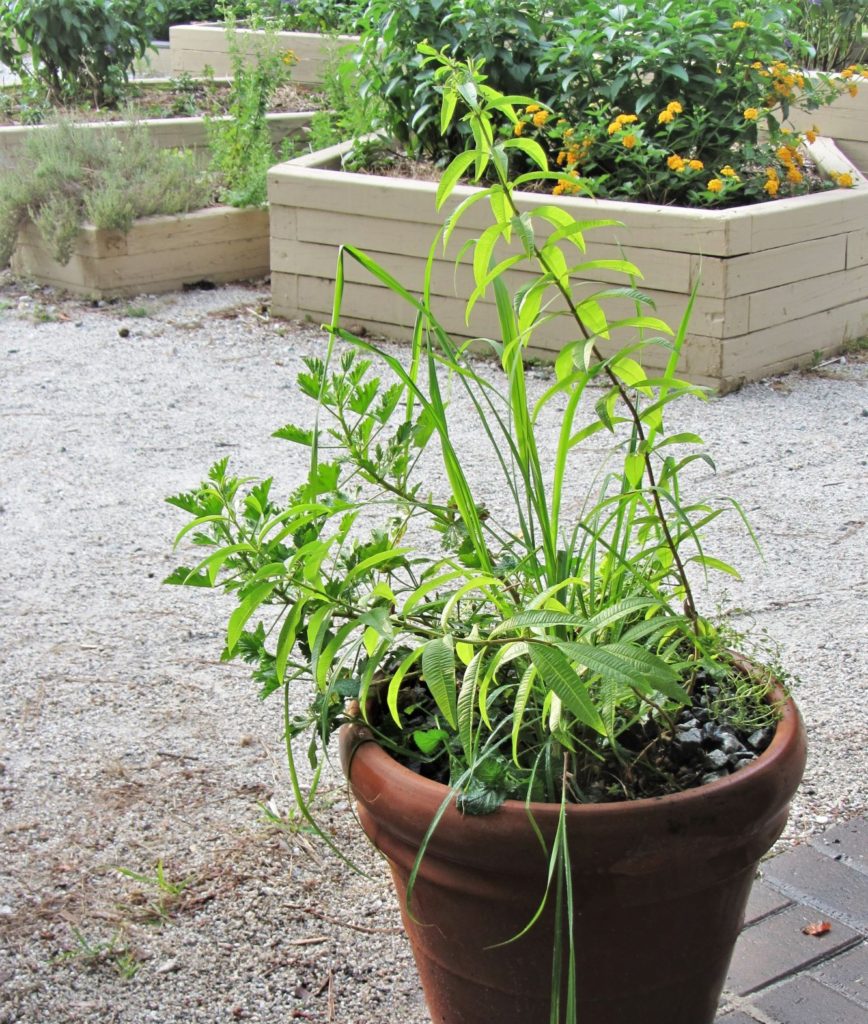Designing With Lemon Scented Plants
Picnics with citronella candles, lemon scented furniture polish and sweet tea with lemons all recall happy childhood memories. Fragrance has a profound ability to create or shift a mood, to trigger memories and create new ones. Just as cinnamon evokes the holidays; crisp, cool lemon is a summertime fragrance.
Most lemon scented plants thrive in warm climates. Lemon trees, Citrus limon, are hardy only to Zone 8. Originally native to Asia, they spread throughout the ancient world wherever the climate was warm enough to support them. Europeans grew lemons and other citrus fruits in heated glass houses because the climate was too cold for this highly desirable crop. Lemon trees grow only in the warmest regions of the United States and must be over-wintered indoors in Virginia.
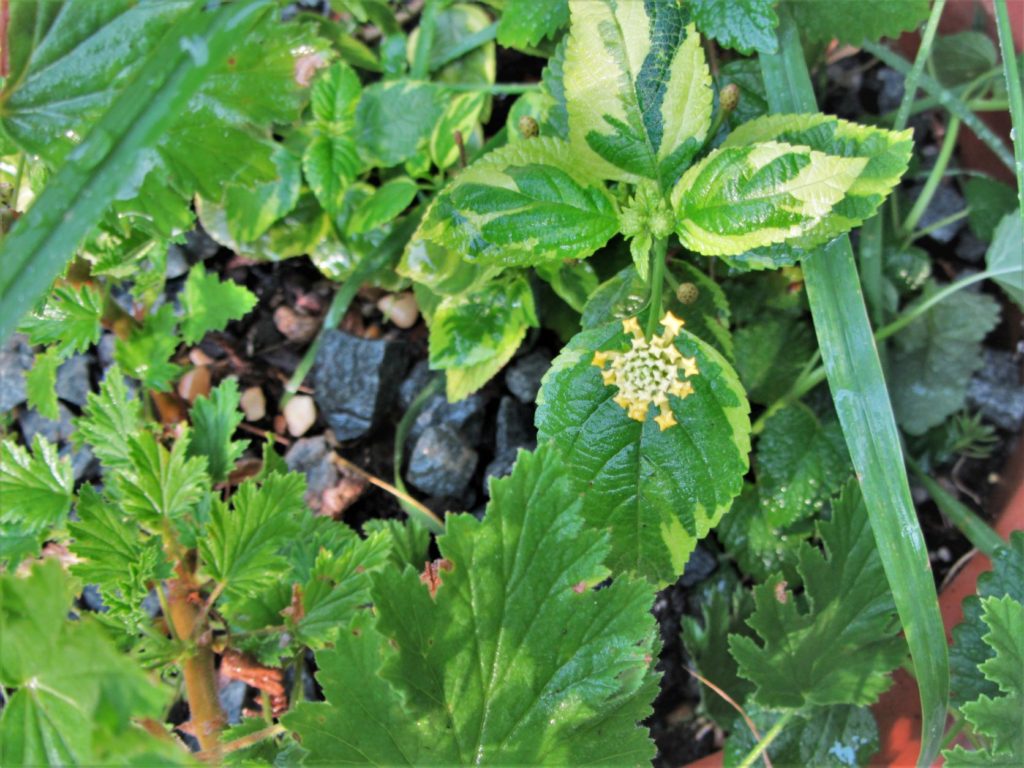
Lantana camara ‘Yellow Variegated’ will bloom until frost. It isn’t lemon scented, but has lemon yellow flowers.
Using Lemon Scented Herbs
A variety of lemony herbs allow us to enjoy lemon scent and flavor without buying or growing lemons. Several of them are described below. While some, like lemongrass, lemon Verbena and lemon scented geraniums (Pelargonium species) require warm winters to grow as perennials, many are very hardy in Zone 7.
Save the tender perennials over winter as houseplants, if you wish, so you can continue to use them year-round. Most are easy to find in garden centers each spring.
Citrus scented essential oils present in certain herbs not only smell and taste like lemons, but they can also be used for many of the same purposes as lemons. Lemon is frequently used for cleaning and deodorizing, as an anti-microbial, in cooking, for tea, as insect repellant, and as a perfume. The smell of lemons energizes us and lifts our mood.
Lemon scented leaves, from several different herbs, may be used to infuse flavor in vinegars, spirits, oils, sugar and tea. Use their leaves, fresh or dried, as flavoring in baked goods and other recipes. Use them to infuse citrus oil into beeswax for polishing and cleaning furniture. Dry the leaves to add to potpourri or to create herbal teas. You can use their edible flowers as garnishes.
Many lemon scented herbs can be rubbed on the skin to repel insects, or their essential oils mixed with various carriers to create lotions to rub or spray on the skin (or clothing) to repel insects. Grow a container of lemon scented herbs on a porch or patio to repel insects from that area.
Growing Lemon Scented Herbs
Lemon scented herbs are very simple to grow alone, or in mixed arrangements in garden beds or containers. Most want at least 6-8 hours of sun each day and well-drained, moist soil. Most are very drought tolerant, once established. All of these herbs respond well to frequent trimming, attract pollinators when in bloom, and are relatively pest and disease free. Deer won’t find them interesting.
Several years ago, I saw a lemon scented container planting of mixed herbs and decided to create something similar. Its fragrance caught my attention first. But it was a very large, beautiful arrangement with lots of interesting texture. Tall lemon grass formed the backdrop, moving in the slightest breeze.
The Golden Rule for Mixed Container Plantings
Include plants of different sizes and growth habits so the plants can cooperate more than they compete. Some designers include thrillers, fillers and spillers in their plantings, so the arrangement has height, breadth, and some stems trail down the pot. Also consider the depth and spread of each plant’s roots. Choose a container large enough to accommodate both roots and stems comfortably. Larger containers are easier to maintain as they don’t need watering as frequently. Add a pebble mulch to conserve water.
You can mix and match lemon scented herbs with any other sun-loving plants. Grow thyme as a ground cover below tomatoes and other tall vegetable plants. It will attract beneficial insects and may repel deer. Grow lemon Verbena as a tender shrub with perennials. Add any of these to your herb garden. I added a Lantana with bright yellow flowers and variegated leaves to my planting this year.
You might enjoy growing a selection of lemon scented herbs together in a large container to help repel mosquitoes and fill your outdoor space with a delicious lemon fragrance. These beautiful herbs invite curious fingers to touch them. Include them in a sensory garden for children or elders.
Tender Lemon-scented Herbs
Lemon Verbena Aloysia citrodora or Aloysia triphylla Zone 8-10
Lemon Verbena grows into a woody shrub 2’-4’ tall and wide in its native South America. Pinch or prune frequently to form a bushier plant. Harvest leaves to use fresh or dry by pruning back a branch. Blooms with white or pink flowers and attracts pollinators.

Lemongrass is a grass and sways with the slightest breeze. It is important to many Asian cuisines. Harvest leaves for cooking.
Lemongrass Cymbopogon citratus Zone 10-11
Lemongrass grows into a clump of grassy blades 2’-4’ tall and up to 3’ across. Harvest leaves for use in cooking. Native to India and Sri Lanka, it is an essential flavoring in many Asian cuisines. Can cause stomach upset to pets, toxic to horses.
Lemon Scented Geranium Pelargonium crispum, P. citrosum and P. citronellum Zones 9-11
Scented geraniums are highly ornamental small woody shrubs native to South Africa. Grown as annuals, they remain bushy herbaceous plants 1’-3’ tall and wide that respond very well to frequent trimming. Some varieties may cause stomach upset when leaves are eaten in quantity, and they may cause stomach problems for cats and dogs. Blooms sporadically with small pink or white flowers attractive to pollinators and can grow in partial shade.
Lemon Basil Ocimum americanum Zones 10-11
Lemon Basil grows 18” tall and wide. A member of the mint family, all parts of the plant are fragrant and edible. Native to tropical Africa and Asia, basil loves heat. Frequent pinching makes basil bushier and more productive. White flowers attract pollinators.
Hardy Perennial Lemon Scented Herbs
Lemon Thyme Thymus citriodorus 5-9
Lemon thyme, native to Europe, grows into a thick, woody ground cover 6”-12” tall and 12” wide. It will spread wider over time as stems root at the nodes. Very easy to grow, thyme grows on poor soil, is highly drought tolerant, and will grow in partial shade. Cut back hard from time to time to maintain shape and appearance. Leaves may be variegated, and remain evergreen in mild climates. Tiny lilac flowers appear in summer. Use leaves fresh or dry. They are edible and have medicinal uses.
Lemon Balm Melissa officinalis Zone 3-7
Lemon balm grows 2’-3’ tall and wide, is a vigorous member of the mint family, and is best grown in a container to control its spread. It produces white flowers that attract pollinators over a long season. Frequent trimming keeps the plant bushy and controls size. Native to Southern Europe, lemon balm has naturalized in North America and has medicinal uses in herbal medicine. It grows well in many types of soil and will grow in partial shade.
Lemon Mint Mentha x piperita f. citrata ‘Lemon’ Zones 5-9
Lemon mint, like other edible mints, can grow aggressively and spreads by rhizomes. It grows 1’-2’ tall and responds well to frequent trimming to keep it bushy. Grow in a large container unless it is intended to form a dense ground cover. Lavender flowers appear in June and July. Mint leaves and stems are edible and have many medicinal uses.
Lantana camara ‘Variegated Yellow’ Zones 8-11
Lantana has a minty fragrance, but isn’t lemon scented. It is included in this planting for its variegated leaves and yellow flowers. Please note that Lantana is poisonous and may irritate the skin of some people. Never eat any part of a Lantana plant. It is an evergreen woody shrub to 3′ tall and wide in warmer climates, and sometimes overwinters in our area. It will drop its leaves after frost and may return from its roots the following spring. Lantana is exceptionally drought tolerant and its flowers attract butterflies and hummingbirds. Birds eat its seeds.
All photos by Elizabeth McCoy, with appreciation to the Williamsburg Botanical Garden and Freedom Park Arboretum, where many of these photos were taken.
Elizabeth McCoy is a JCCW Master Gardener Tree Steward and a former Williamsburg Botanical Garden volunteer.

